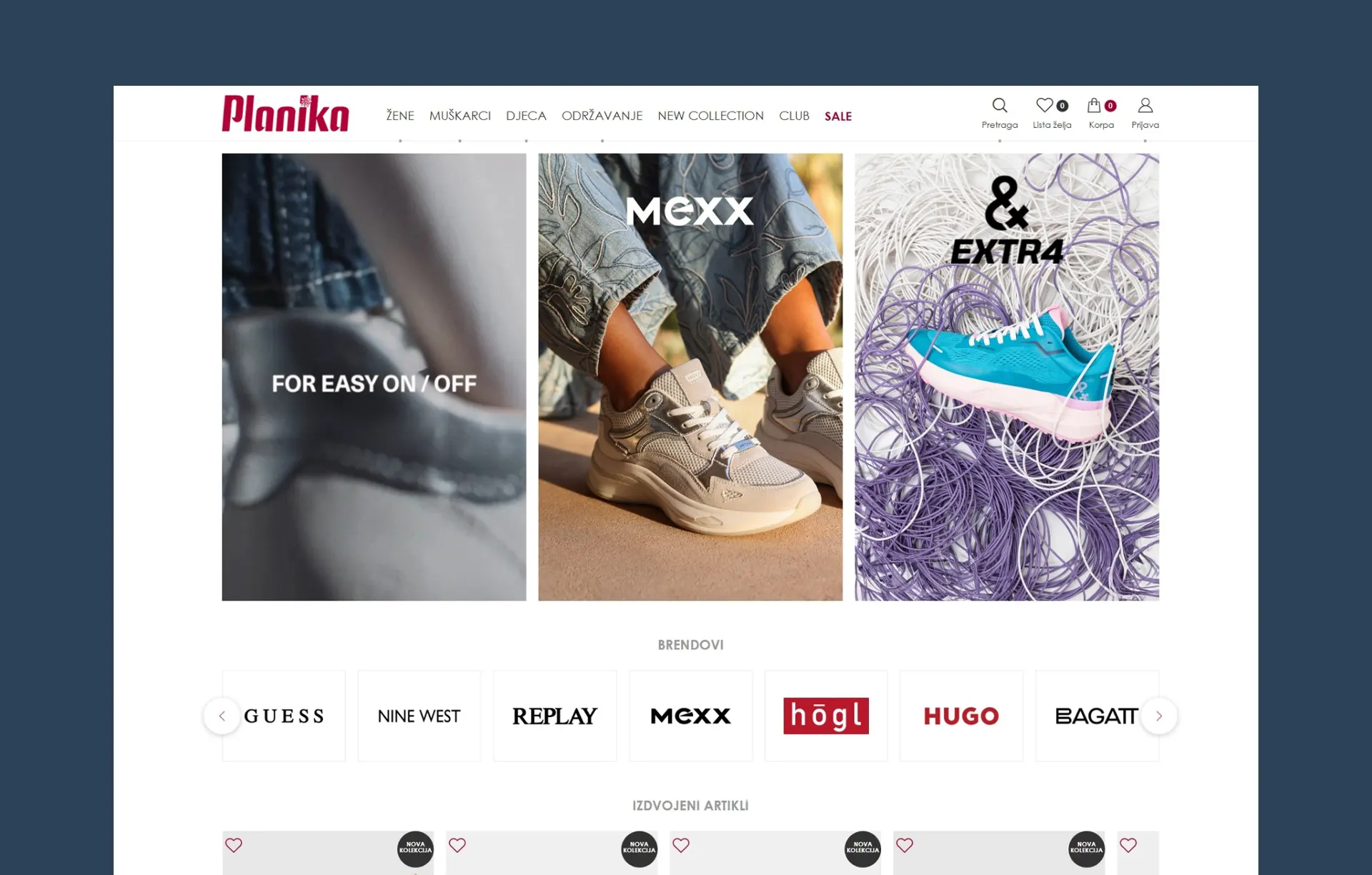How Planika Achieved €21 in Revenue for Every €1 Invested

We’ve been working with Planika for 7 years and can confidently say we’ve been their key partner in their rise in the online market. When we first started our cooperation, the very first topic we discussed, and which Planika quickly understood, was the importance of having a proper web shop. Instead of redesigning the existing one, we proposed building a completely new web shop that would be able to meet future demands. The best part? From the start, Planika treated their web shop as seriously as their physical stores, continuously investing in both advertising and development. We often see companies with websites that serve only as presentations—and even then, they’re not set up properly. They’re too focused on themselves and not enough on the end customer. For example, many websites open with “Our Mission and Vision.”
In reality, customers don’t care about that. They care only about what you can offer them and what benefit they get from it. Another common mistake is offering too many options on a website. When people have too many choices, the chance they’ll complete the primary goal—making a purchase—decreases. In these cases, simple landing pages with strong copywriting perform much better than complicated websites. We also often encounter issues with mobile optimization. Despite talking about this for years, many companies still prioritize desktop versions of websites.
This is partly because business owners don’t always know what they want, and web developers, building on laptops, naturally focus on desktop views.
But our data shows more than 80% of users come from mobile devices, so that’s where the focus should be. Another critical element is attribution modeling—understanding where sales are actually coming from. This often confuses newcomers to advertising.
If you’re advertising on Meta (Facebook and Instagram) and Google at the same time, both platforms can end up reporting the same sales or conversions.
1.000
Facebook advertising
1.000
Google advertising
For example, Meta might report 1,000 sales, Google 1,000 sales, but in total you sold 1,500 products. What happened?
It means some customers clicked on both a Google and a Meta ad within a short time window, and both platforms attributed the sale to themselves.
750
Facebook advertising
750
Google advertising
Many believe a sale happens right after someone sees an ad, clicks, and buys.
But our experience tells us that’s rare. Much more often, potential customers visit a website 10 or more times before purchasing. They may arrive via Facebook or Instagram ads, organically through Google, via Google Ads, or by typing the URL directly. So those 500 “extra” sales are essentially double-counted by both Google and Meta.
In reality, if you take the average, both platforms likely drove about 750 sales each. The best approach is to monitor data in Google Analytics—but even then, the numbers won’t be 100% accurate because analytics tools can’t measure users who don’t allow cookies, particularly those on Apple devices.
From our experience, nearly half of websites in Bosnia and Herzegovina don’t even use Google Analytics, and 80% of those that do haven’t set it up properly to measure everything necessary. That’s the first step toward successful online sales of anything. In addition to Google Analytics, you need proper implementation of Google Tag Manager and the Facebook Pixel.
When these are set up correctly, Meta and Google targeting can work almost automatically and much more effectively than when targeting is done manually.
This setup allows us to run Google Performance Max campaigns, which leverage AI-powered targeting to find people most likely to convert. Another huge opportunity is implementing dynamic remarketing on both platforms. This means Meta and Google automatically generate ads based on products a user has viewed—or similar products.
This approach has proven more successful than most other campaign types, except for Google Search campaigns.
Finally, one of the rarest campaign types in our region are campaigns focused directly on ROAS. In these campaigns, you don’t think about budget—Google and Meta optimize everything for you. You simply set your target ROAS, and the platforms work to deliver it. Of course, it doesn’t work by simply saying “I want a 20x ROAS.” It requires extensive testing, and only then can you determine the realistic ROAS that can be scaled.
In summary, here are 8 things you need to implement to take your business to the next level:
- A website optimized for conversions
- Advanced Google Analytics setup
- Google Tag Manager
- Facebook Pixel
- Conversion tracking
- Dynamic ads on Google and Facebook
- Performance Max campaigns
- ROAS-driven campaigns
If you found this text useful, share it with someone who could benefit from it.
And if you’d like us to implement all of this for you, simply fill out the online form on our website and we’ll get in touch.